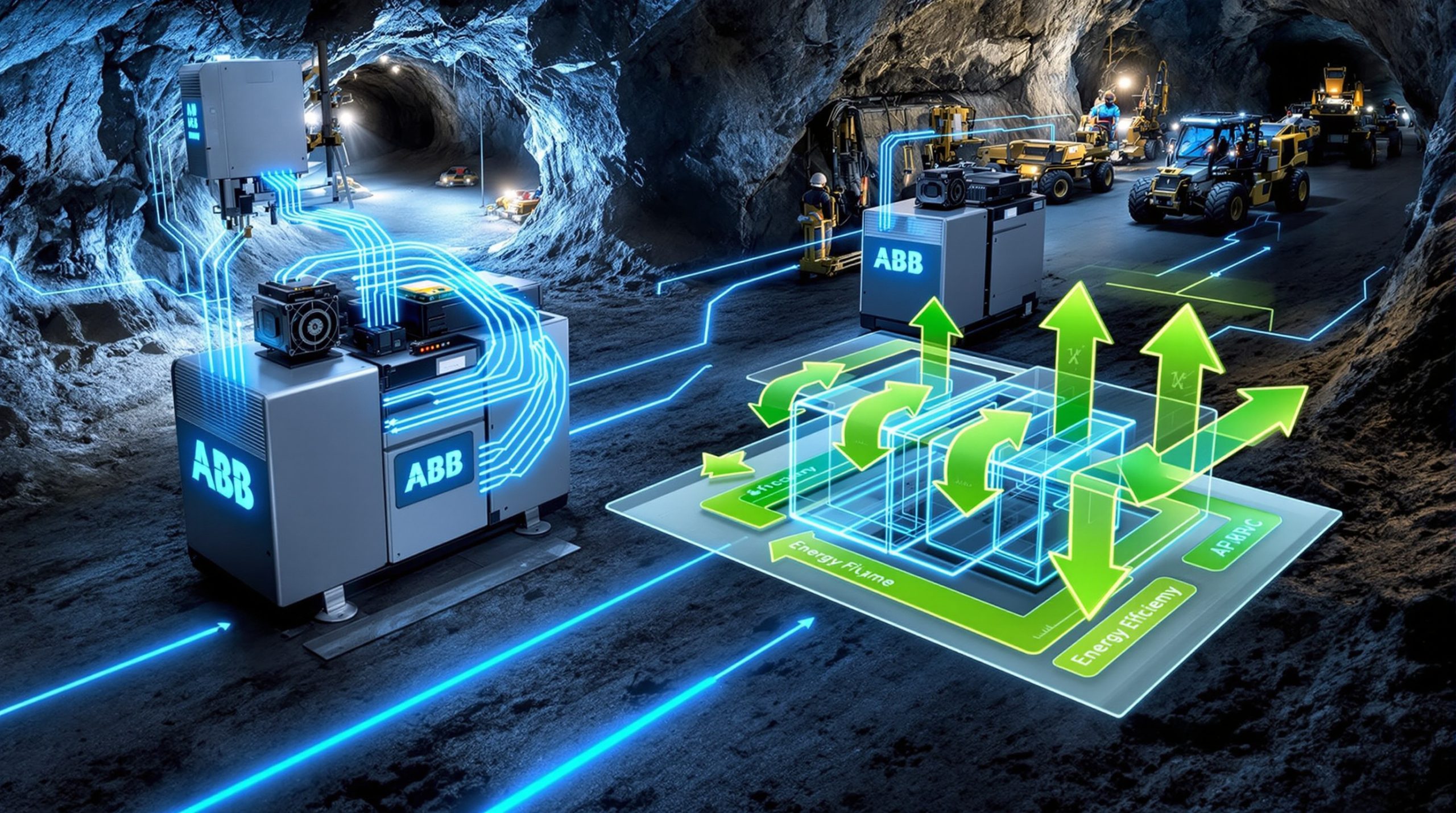Integrated Water Management in Mining: Balancing Sustainability and Resource Extraction
Integrated water management represents a comprehensive approach to handling water resources throughout the mining lifecycle. This strategy orchestrates planning, consumption, treatment, recycling, and discharge processes to achieve harmony between environmental protection, community needs, and operational efficiency. As mining operations expand globally to meet growing mineral demands, adopting sophisticated water management solutions has become increasingly crucial.
Core Components of Integrated Water Management
Water management in mining encompasses multiple interconnected elements that work together to ensure sustainable operations:
- Resource planning that considers watershed impacts and long-term availability
- Usage optimization to minimize freshwater consumption
- Advanced treatment systems that meet or exceed regulatory standards
- Recycling processes that maximize water reuse
- Stakeholder collaboration to address community concerns
- Adaptive management that responds to climate change challenges
- Environmental stewardship focused on minimizing ecological footprints
Why Water Management Is Critical for Mining Operations
Mining operations are inherently water-intensive, requiring substantial volumes for various processes from mineral extraction to processing and transportation. In the United States alone, the mining sector withdraws approximately 4 billion gallons of water daily, representing about 1% of national water usage according to USGS data. While this percentage might seem small, the environmental implications are significant due to potential contamination risks and the sensitive locations where many mining operations occur.
The Water-Intensive Nature of Mining
Water touches virtually every aspect of mining operations:
- Ore processing and mineral separation
- Dust suppression on roads and work areas
- Equipment cooling and maintenance
- Worker facilities and sanitation
- Tailings management and waste disposal
- Site remediation and reclamation activities
Water Management Challenges
Mining companies face numerous water-related challenges that vary by location, mineral type, and operational scale:
- Geographic constraints: Operations in arid regions face water scarcity while those in wet areas must manage excess water
- Quality concerns: Mine water often contains dissolved metals, chemicals, and suspended solids requiring treatment
- Regulatory compliance: Increasingly stringent environmental regulations require sophisticated management approaches
- Community relations: Local stakeholders often have concerns about water usage and potential contamination
- Climate adaptation: Changing precipitation patterns create uncertainty in water availability and management needs
Industry experts note that community concerns and climate-induced challenges like drought and flooding have made integrated water management in mining even more critical to mining success and sustainability in recent years.
How the Energy Transition Impacts Mining Water Management
The global shift toward renewable energy and electrification is driving unprecedented demand for critical minerals essential to these technologies. This transition presents both challenges and opportunities for mining water management.
Critical Minerals Demand and Water Implications
By 2040, according to the International Energy Agency's Global Critical Minerals Outlook, demand is projected to increase dramatically for key minerals:
| Mineral | Projected Demand Increase |
|---|---|
| Lithium | 500% (5x current demand) |
| Cobalt | 50-60% |
| Rare Earth Elements | 50-60% |
| Copper | 30% |
This surge in demand necessitates more efficient and sustainable water management practices as mining operations expand to meet market needs. The minerals powering renewable technologies like solar panels, wind turbines, and electric vehicle batteries require substantial water for extraction and processing. Recent advancements in direct lithium extraction are helping address some of these challenges.
Water as a Limiting Factor
Water availability increasingly constrains mining operations in key regions where critical minerals are abundant. As climate change intensifies water stress in many mining areas, integrated water management becomes essential for ensuring continued production capacity.
Water scarcity can directly impact:
- Production volumes and processing capacity
- Operating costs and profit margins
- Relationships with local communities
- Regulatory compliance and permitting
- Corporate reputation and social license to operate
Key Approaches to Mine Water Management
Modern mining operations typically employ two fundamental approaches to water management, each with distinct advantages and applications depending on site-specific conditions. According to ICMM's water stewardship framework, mining companies are increasingly adopting holistic approaches to address these challenges.
Treatment with Environmental Discharge
This traditional approach focuses on treating mine water to meet regulatory standards before releasing it to the environment. Modern innovations in this area include:
- Advanced chemical treatment processes that target specific contaminants like heavy metals and sulfates
- Biological remediation systems utilizing microorganisms to transform toxic compounds into less harmful substances
- Passive treatment solutions like constructed wetlands that require minimal energy and maintenance
- Real-time monitoring systems to ensure consistent compliance with discharge parameters
Environmental discharge remains necessary in many operations, particularly those with water surplus or limited capacity for reuse. However, stricter environmental regulations have made treatment more costly and time-intensive, driving innovation in treatment methodologies.
Treatment with Water Reuse
The industry increasingly favors closed-loop systems that minimize discharge by reusing water throughout operations:
- Multi-stage water usage that cascades water through processes with decreasing quality requirements
- Process-specific treatment tailored to different operational needs rather than treating all water to the highest standard
- Zero liquid discharge (ZLD) systems in water-scarce regions that eliminate environmental releases
- Water recovery from tailings and waste materials to maximize resource efficiency
Water reuse offers tangible economic advantages, particularly in arid locations where water is scarce. Even in water-rich regions, reuse can reduce treatment costs while also helping mitigate local impacts by minimizing discharges to natural water bodies.
Mining Companies Implementing Water Efficiency Strategies
Forward-thinking mining operations employ various technologies and approaches to reduce water consumption and maximize efficiency throughout their operations. The implementation of data-driven operations has significantly improved water management capabilities.
Water Conservation Technologies
Modern mining facilities utilize numerous innovations to reduce water intensity:
- Dry processing methods that minimize or eliminate water usage for certain minerals
- High-efficiency washing and separation equipment that reduces water requirements
- Thickeners and filter presses to recover water from slurries and tailings
- Leak detection systems using IoT sensors and real-time monitoring
- Water-efficient dust suppression techniques like chemical additives and microsprays
These technologies not only conserve water but often improve operational efficiency and reduce costs associated with water procurement, treatment, and disposal.
Economic Benefits of Water Efficiency
Implementing water efficiency measures delivers multiple financial advantages:
- Reduced freshwater procurement costs in regions where water is expensive or scarce
- Lower treatment and discharge expenses due to smaller volumes requiring management
- Decreased regulatory compliance risks and associated potential fines
- Enhanced operational resilience during drought conditions
- Improved community relations and strengthened social license to operate
Many mining companies have found that investments in water efficiency technologies pay for themselves through direct cost savings while also providing risk mitigation benefits that are harder to quantify but equally valuable.
Stormwater Management in Mining Operations
Effective stormwater management is a critical component of integrated water management in mining, helping prevent contamination while potentially providing additional water resources for operations.
Innovative Stormwater Control Approaches
Modern mining operations implement sophisticated stormwater management strategies:
- Diversion infrastructure to redirect clean runoff away from operational areas, minimizing contamination potential
- Engineered cover systems to reduce infiltration into waste materials and prevent leachate formation
- Retention ponds designed for settling and controlled release during appropriate conditions
- Subsurface barriers to prevent groundwater contamination from infiltrating stormwater
- Harvesting systems to capture and reuse precipitation for operational needs
These approaches not only help prevent environmental contamination but can also reduce freshwater requirements by utilizing captured stormwater for operational purposes.
Climate Adaptation in Water Infrastructure
Mining operations increasingly design water infrastructure with climate resilience in mind:
- Expanded storage capacity to accommodate more frequent and intense rainfall events
- Robust drainage systems sized for projected precipitation patterns rather than historical averages
- Permafrost protection measures in arctic regions, including innovative approaches like circulating coolant systems to re-freeze permafrost
- Drought contingency planning with alternative water sources and efficiency measures
The permafrost protection technology mentioned above represents a novel solution to a growing challenge in arctic mining regions, where climate change is causing permafrost loss and increased groundwater intrusion into mines. Though still developing, this approach is becoming increasingly cost-effective as compliance requirements in sensitive locations become more stringent.
Tailings Management Integration with Water Systems
Tailings management represents one of the most significant opportunities for water conservation and recovery in mining operations, with innovative approaches transforming what was once considered waste into valuable resources.
Water Recovery from Tailings
Modern tailings management focuses heavily on water recovery:
- Dewatering technologies like filter presses and centrifuges to extract and reuse process water
- Filtered tailings (dry stack) approaches that minimize water entrapment in storage facilities
- Paste backfill systems that return water to the processing circuit while stabilizing underground workings
- Evaporation reduction techniques for tailings storage facilities to prevent water loss
In some operations, regulatory restrictions have essentially eliminated the option to discharge tailings water to the environment, accelerating the adoption of dry stack methods and other water recovery approaches.
Mineral Recovery from Process Water
Innovative approaches are extracting additional value from process water and tailings:
- Secondary recovery of rare earth elements from tailings water that would otherwise be lost
- Extraction of lithium, nickel, and cobalt from process solutions and tailings materials
- Repurposing of iron-rich materials for alternative applications like pigment production
- Recovery of dissolved metals through advanced separation technologies
These processes not only improve resource efficiency but can create new revenue streams while reducing environmental risks associated with waste materials. By capturing hazardous materials that pose contamination threats, these recovery processes deliver both economic and environmental benefits.
Technologies Transforming Mining Water Management
Technological innovation continues to reshape how mining operations monitor and manage water resources, driving improvements in efficiency, compliance, and sustainability. These advancements reflect broader industry evolution trends within the sector.
Digital Water Management Solutions
Digital technologies are revolutionizing water management in mining:
- Real-time water quality monitoring systems that provide immediate feedback on key parameters
- Predictive analytics for water balance modeling to anticipate needs and potential issues
- Automated treatment control systems that adjust processes based on real-time data
- Digital twins of water infrastructure for optimization and scenario planning
- Blockchain-based water accounting and reporting for transparency and compliance
These digital solutions improve decision-making by providing accurate, timely information while reducing manual monitoring requirements and associated costs.
Emerging Treatment Technologies
New treatment approaches are improving efficiency and effectiveness:
- Membrane filtration systems including ultrafiltration, nanofiltration, and reverse osmosis for contaminant removal
- Electrochemical treatment processes for selective contaminant removal with lower chemical usage
- Advanced oxidation techniques for persistent compounds that resist conventional treatment
- Phytoremediation and constructed wetlands for passive, low-energy treatment
- Solar-powered treatment systems for remote locations without reliable grid power
These technologies are making treatment more cost-effective while achieving higher water quality standards, enabling both improved environmental outcomes and increased water reuse opportunities.
Community Engagement in Water Management
Successful water management extends beyond technical solutions to include meaningful engagement with local communities and other stakeholders affected by mining operations.
Collaborative Water Stewardship
Leading mining companies embrace watershed-level planning and engagement:
- Watershed-level monitoring and management that considers cumulative impacts
- Transparent water usage reporting accessible to community members
- Joint infrastructure development that serves both mine and community needs
- Shared water quality monitoring programs that build trust through participation
- Post-mining water resource planning that ensures sustainable water systems after closure
These collaborative approaches recognize that water resources transcend property boundaries and require inclusive management strategies that address diverse stakeholder concerns.
Building Trust Through Water Governance
Effective community engagement on water issues includes:
- Participatory decision-making processes that incorporate local knowledge and priorities
- Regular stakeholder consultations to identify and address emerging concerns
- Education and capacity building initiatives that empower communities to engage meaningfully
- Fair water allocation frameworks that respect traditional and historical water rights
- Responsive grievance mechanisms for addressing water-related concerns
Mining companies that invest in genuine community engagement often find that the upfront costs are far outweighed by the benefits of reduced conflict, faster permitting, and stronger social license to operate.
Regulatory Trends Affecting Mining Water Management
Water management regulations for mining operations continue to evolve globally, generally becoming more stringent and comprehensive over time.
Evolving Compliance Requirements
Regulatory frameworks are becoming increasingly demanding:
- Lower contaminant threshold limits for discharged water
- Expanded monitoring and reporting obligations with greater frequency and detail
- Watershed-based permitting approaches that consider cumulative impacts
- Life-cycle water management planning requirements from exploration through post-closure
- Financial assurance mechanisms to guarantee long-term water treatment if needed
These evolving requirements drive innovation while also increasing the complexity and cost of compliance, making proactive water management increasingly important to mining economics.
International Standards and Certifications
Global frameworks are shaping best practices beyond regulatory compliance:
- International Council on Mining and Metals (ICMM) water stewardship principles guiding member companies
- Alliance for Water Stewardship (AWS) certification providing independent verification of water management practices
- ISO 14001 environmental management systems incorporating water management components
- Global Reporting Initiative (GRI) water disclosure standards enhancing transparency
- Sustainable Development Goals (SDGs) alignment connecting mining water management to broader sustainability objectives
Mining companies increasingly adopt these voluntary standards to demonstrate commitment to responsible water management, enhance brand reputation, and meet the expectations of investors, customers, and other stakeholders.
Integrated Water Management Supporting Mine Closure
Effective water management planning extends throughout the mine lifecycle, with closure presenting unique challenges and opportunities that require careful consideration from the earliest stages of mine planning. The emphasis on mine reclamation innovation is helping address these complex challenges.
Long-term Water Management Planning
Successful mine closure requires comprehensive water planning:
- Predictive modeling of post-closure hydrological conditions to anticipate long-term needs
- Passive treatment system design that can function with minimal maintenance
- Groundwater recovery monitoring programs to track restoration progress
- Surface water restoration initiatives to establish sustainable drainage patterns
- Climate change adaptation incorporated into closure designs to ensure resilience
These planning elements help ensure that closed mines do not create ongoing water management liabilities and can transition to beneficial post-mining land uses.
Water Asset Repurposing
Mine closure can create opportunities for beneficial water infrastructure conversion:
- Pit lake development for recreation, wildlife habitat, or water storage
- Water storage facilities repurposed for agricultural or municipal use
- Treatment systems adapted for ongoing community benefit
- Wetland creation for ecological enhancement and passive water treatment
- Educational facilities focused on water management and mining heritage
These repurposing strategies can transform what might otherwise be liabilities into community assets, creating positive legacies from mining operations.
The Future of Mining Water Management
Looking ahead, mining water management will continue to evolve in response to changing technology, regulations, climate conditions, and stakeholder expectations.
Emerging Trends and Innovations
The future of mining water management will likely include:
- AI-driven optimization of water systems for maximum efficiency and minimal environmental impact
- Waterless or near-waterless processing technologies that dramatically reduce water intensity
- Integrated energy-water management approaches that address the water-energy nexus
- Circular economy principles applied systematically to water resources
- Regional collaborative governance models that transcend individual operations
These innovations promise to transform mining's relationship with water resources, potentially decoupling production growth from water consumption increases.
Strategic Imperatives for Mining Companies
To remain competitive and responsible, mining operations should focus on:
- Embedding water considerations in all strategic decisions from exploration through closure
- Developing water expertise throughout the organization rather than siloing it in environmental departments
- Investing in research and development for water technologies specific to mining challenges
- Building adaptive capacity for climate uncertainty and changing water availability
- Engaging proactively with water policy development rather than merely reacting to new regulations
Mining companies that take a proactive, strategic approach to integrated water management in mining will be better positioned to navigate the challenges and opportunities of the coming decades, particularly as critical mineral demand continues to grow with the global energy transition.
FAQ: Integrated Water Management in Mining
How does water scarcity affect mining operations?
Water scarcity can limit production capacity, increase operational costs, create conflicts with local communities, and potentially lead to regulatory restrictions. Mining companies in water-stressed regions increasingly implement comprehensive water efficiency measures, alternative water sources, and closed-loop systems to mitigate these impacts.
What are the main contaminants of concern in mine water?
Common contaminants include heavy metals (such as lead, arsenic, and mercury), sulfates from acid mine drainage, processing chemicals, suspended solids, and in some cases, naturally occurring radioactive materials. The specific contaminants vary widely based on the geology and processing methods used.
How can mines reduce their freshwater consumption?
Mines can reduce freshwater consumption through water recycling and reuse systems, efficiency improvements in processing, dry or semi-dry processing technologies, tailings dewatering, effective stormwater capture, and leak detection and prevention programs.
What is acid mine drainage and how is it managed?
Acid mine drainage occurs when sulfide minerals in rock are exposed to air and water, creating sulfuric acid that can mobilize heavy metals. Management approaches include prevention (limiting oxygen or water contact), containment (collection systems), treatment (neutralization, precipitation, biological remediation), and monitoring.
How do mining companies balance water needs with community rights?
Progressive mining companies engage in collaborative water governance, transparent reporting, shared infrastructure development, fair compensation mechanisms, and formal agreements that recognize community water rights and needs. This often includes participatory monitoring programs and grievance resolution processes.
Want to Stay Ahead of the Next Major Mineral Discovery?
Discover why significant ASX mineral discoveries can lead to exceptional market returns by exploring Discovery Alert's dedicated discoveries page. Powered by their proprietary Discovery IQ model, Discovery Alert provides instant notifications on potential high-value mining opportunities, giving you the market edge to act before others.




